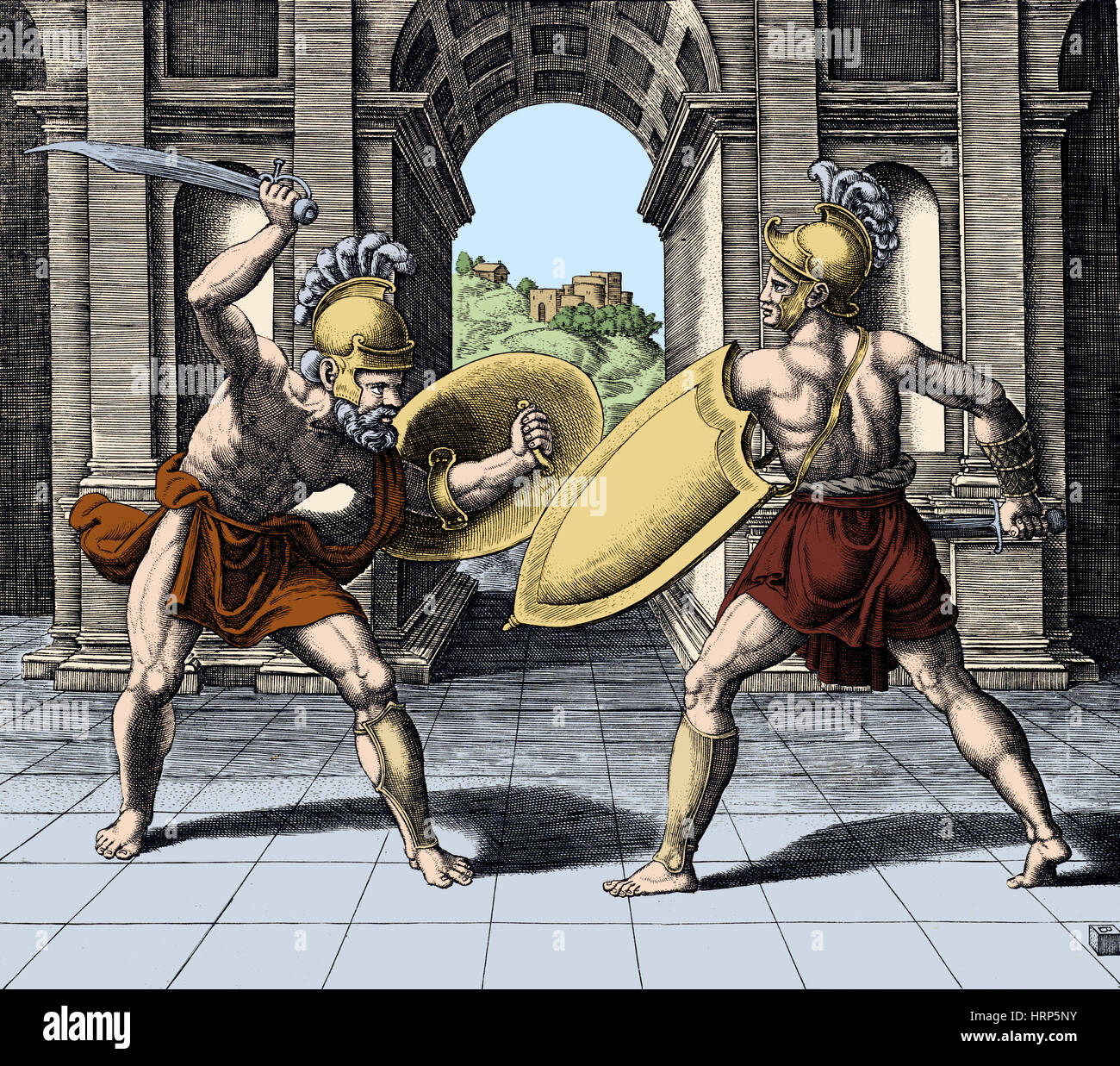Bread and Circus, Gladiators, Ancient Rome

Image details
Contributor:
Science History Images / Alamy Stock PhotoImage ID:
HRP5NYFile size:
38.4 MB (4.7 MB Compressed download)Releases:
Model - no | Property - noDo I need a release?Dimensions:
3900 x 3443 px | 33 x 29.2 cm | 13 x 11.5 inches | 300dpiPhotographer:
Photo ResearchersMore information:
This image could have imperfections as it’s either historical or reportage.
Colorized engraving of two gladiators after Giulio Romano by Master of the Die (flourished 1525-1560) an Italian engraver and printmaker. His year of birth and death are unknown. The identity of the Master of the Die is uncertain. He was given this name because he signed his prints with a small die. A gladiator was an armed combatant who entertained audiences in the Roman Republic and Roman Empire in violent confrontations with other gladiators, wild animals, and condemned criminals. Some gladiators were volunteers who risked their legal and social standing and their lives by appearing in the arena. Most were slaves, schooled under harsh conditions, socially marginalized, and segregated even in death. Gladiators offered spectators an example of Rome's martial ethics and, in fighting or dying well, they could inspire admiration and popular acclaim. They were celebrated in high and low art, and their value as entertainers was commemorated in precious and commonplace objects throughout the Roman world. Gladiatorial combat was an essential feature of politics and social life in the Roman world. Its popularity led to its use in ever more lavish and costly games. The games reached their peak between the 1st century BC and the 2nd century AD, and they finally declined during the early 5th century after the adoption of Christianity as state church of the Roman Empire in 380.